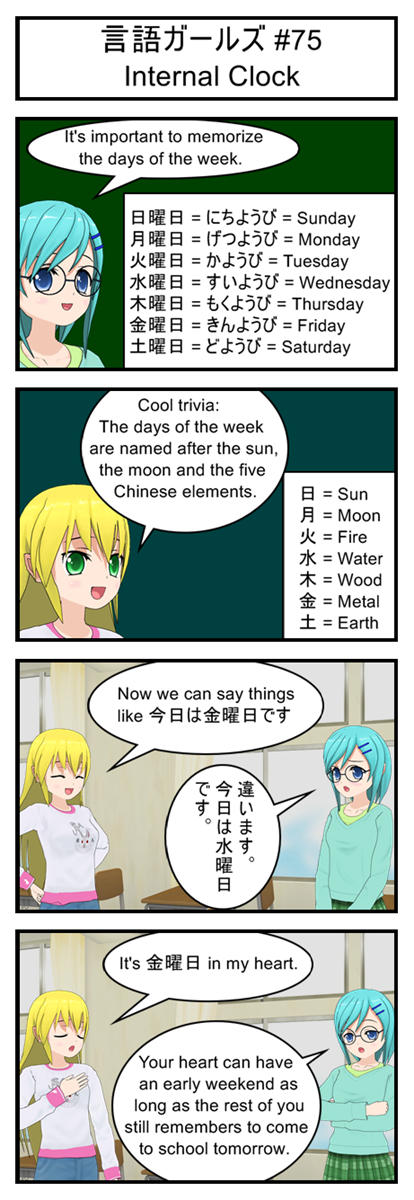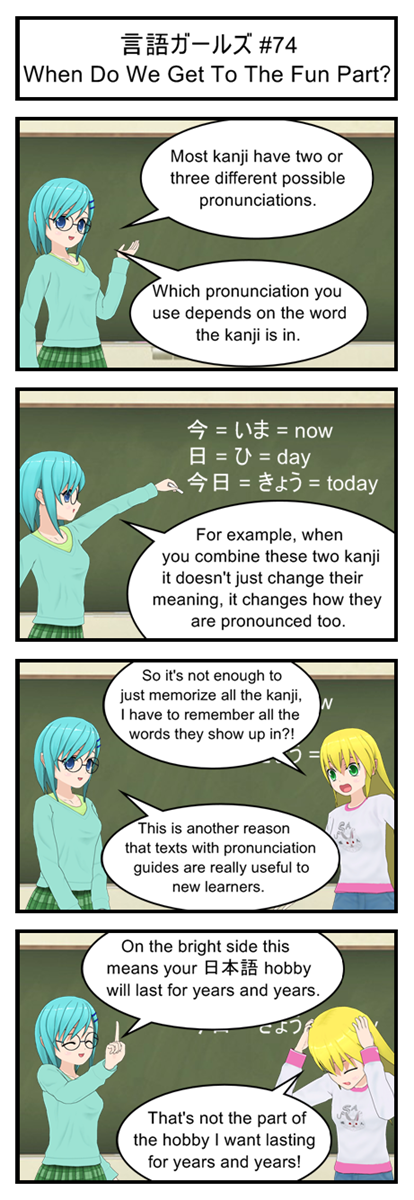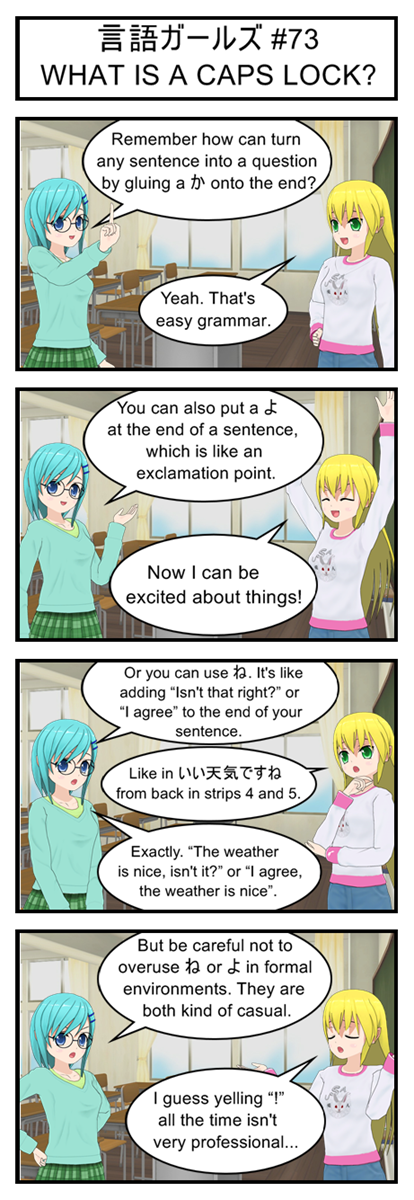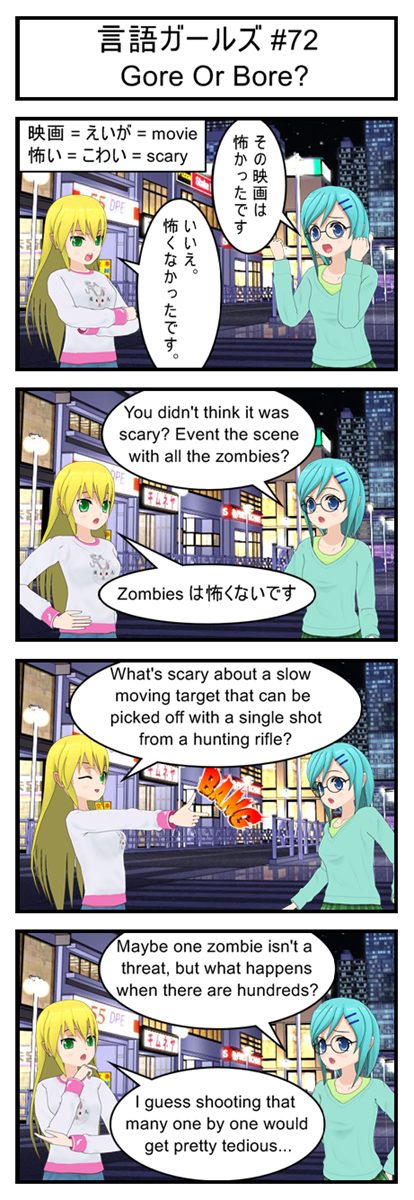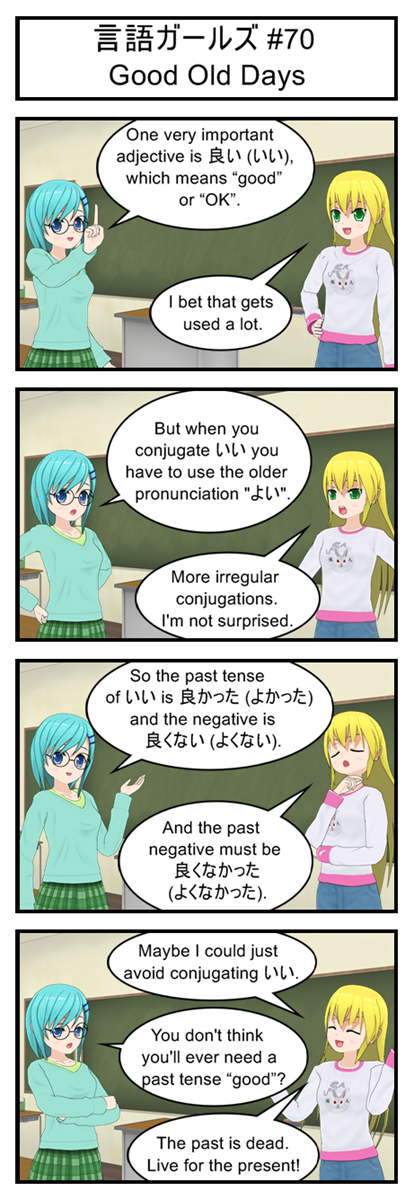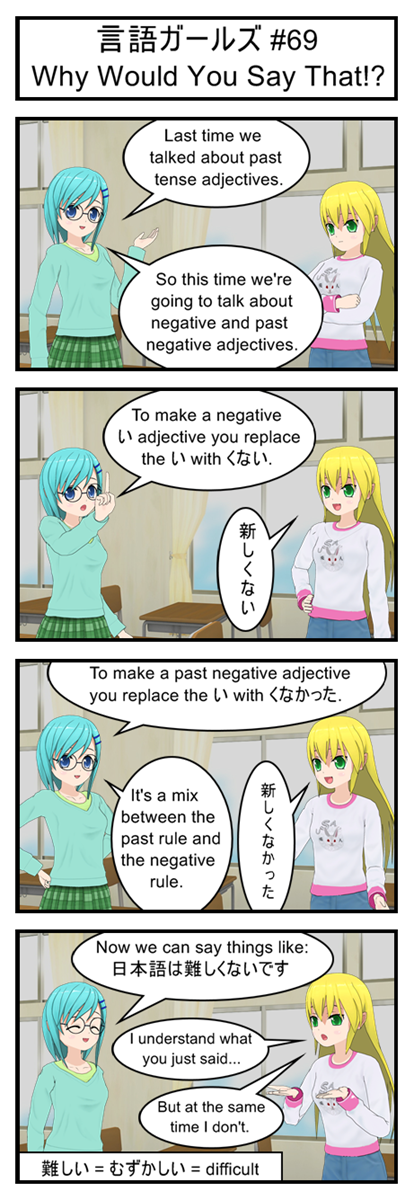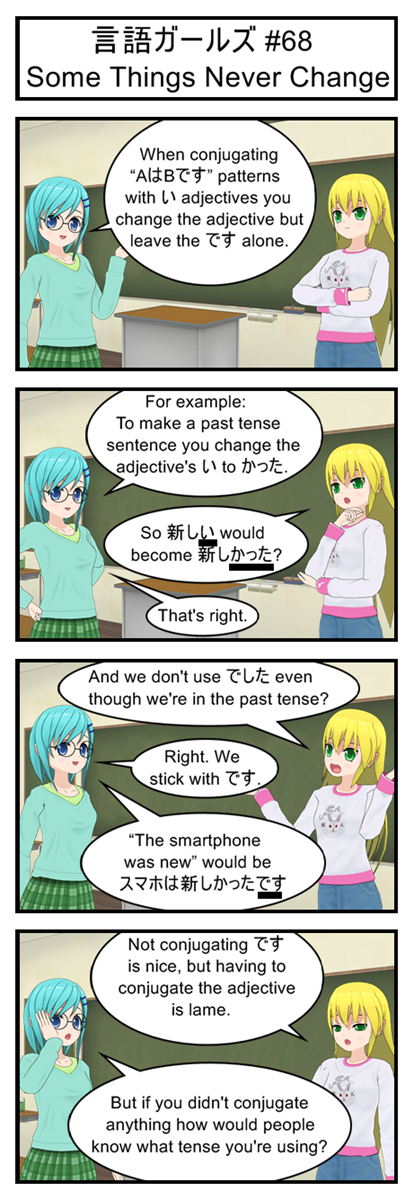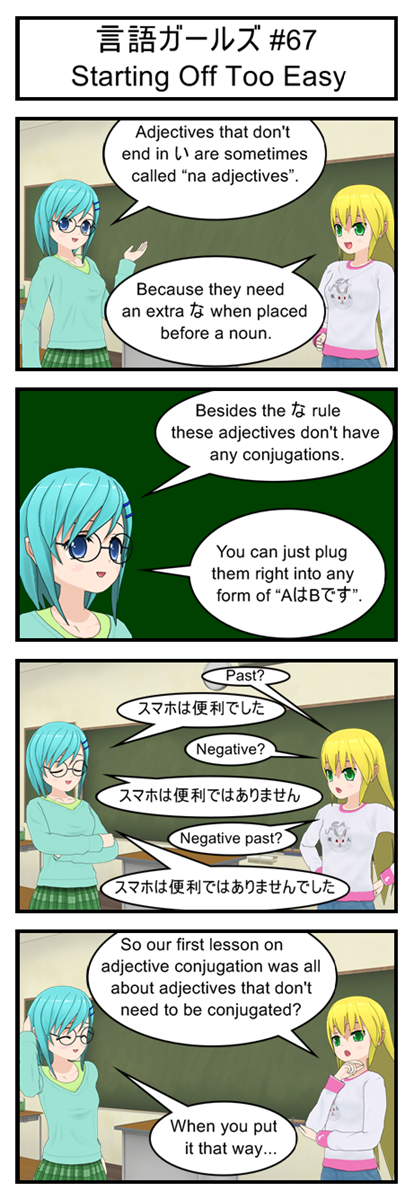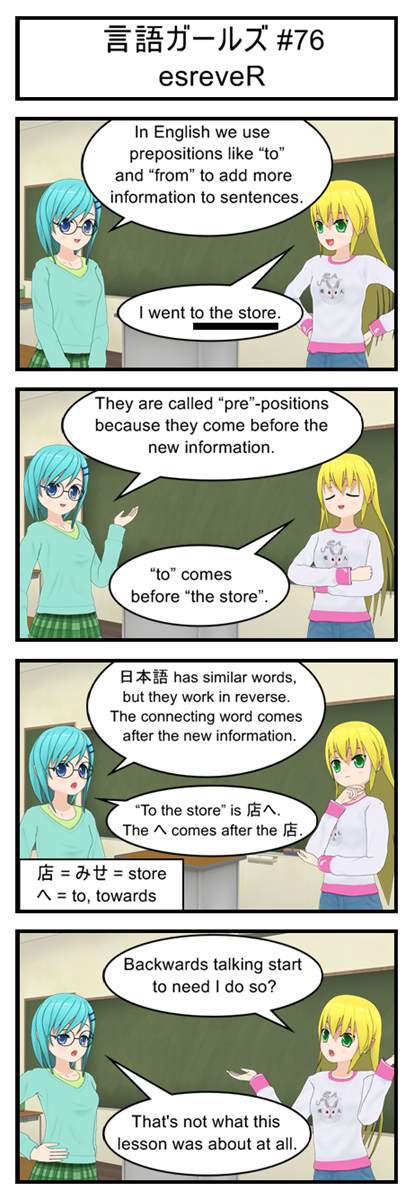
To be honest this isn’t really new grammar since by this point you should be used to marking things by placing a letter after them. Just like you use は to mark subjects and を to mark objects you can use things like へ, で or に to mark different types of prepositional phrases. Although I guess they’re more like post-positional phrases.
We’ll be covering this in more depth next week, but for now just relax and remember that even if Japanese prepositions seem to work backwards they are actually following a pattern you’re very familiar with.
Vocabulary
店 = みせ = store
へ = to, towards
Transcript
言語ガールズ #76
esreveR
Blue: In English we use prepositions like “to” and “from” to add more information to sentences.
Yellow: I went to the store.
Blue: They are called “pre”-positions because they come before the new information.
Yellow: “to” comes before “the store”.
Blue: 日本語 has similar words, but they work in reverse. The connecting word comes after the new information.
Blue: “To the store” is 店へ. The へ comes after the 店.
Yellow: Backwards talking start to need I do so?
Blue: That’s not what this lesson was about at all.
